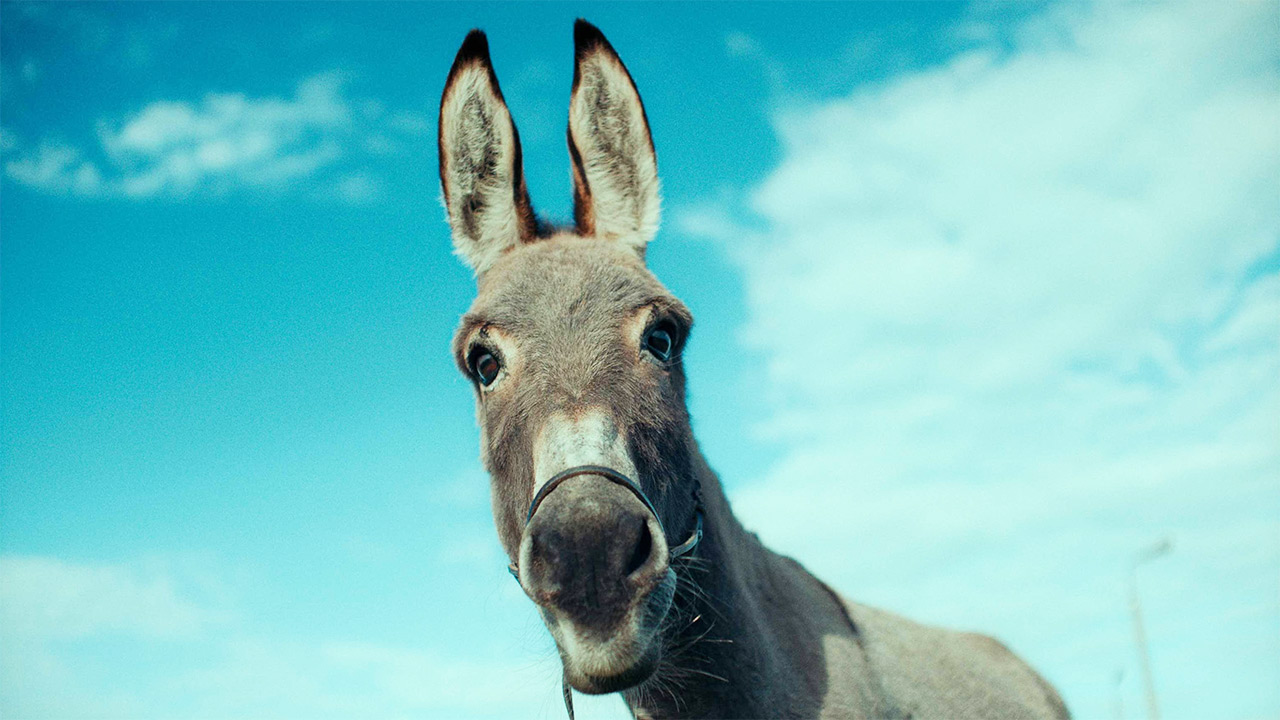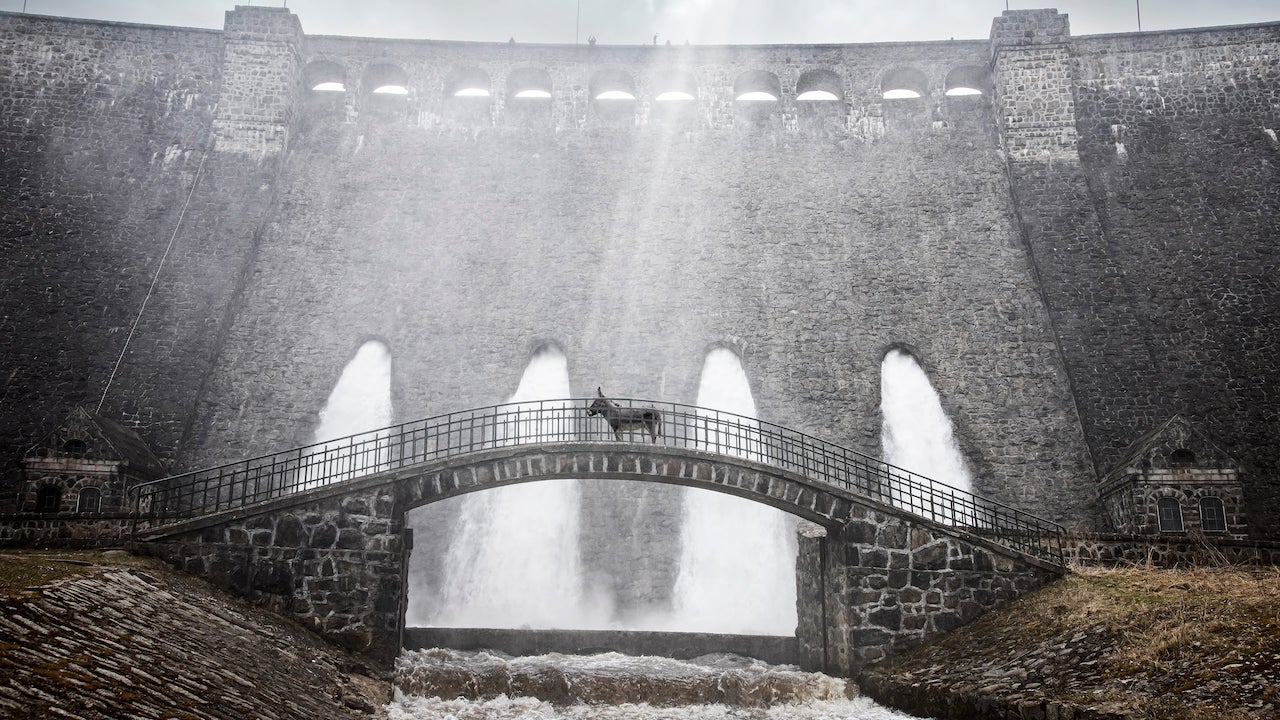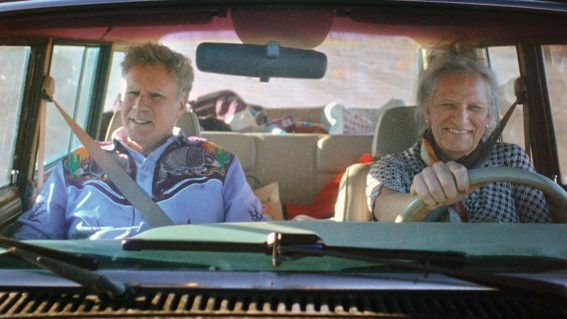EO presents a stunning view of our world – through the eyes of a donkey

In this Polish Cannes-approved drama, we’re invited to witness the noisy human world from a passive animal observer’s perspective: that of the titular donkey hero, EO. Luke Buckmaster says Jerzy Skolimowski’s film is lovely and boldly elegant.
Movies have a long history of anthropomorphizing animals, embracing the fantasy that humans share with our interspecies pals comparable emotions and perceptions. Talking animal movies ingrain that fallacy into the creation process, conjuring cute furry things that think and feel just like us, while productions such as the donkey-focused Polish road movie EO—and the masterpiece that inspired it, Robert Bresson’s quietly revolutionary classic Au Hasard Balthazar—belong to a rarer breed. The animals don’t speak. The filmmakers prioritize capturing circumstances over emotions, sometimes, as in EO, in ways that represent the animal as a pure force navigating a world sullied by humans.
And yet, the desire to apply our own emotional definitions to animals persists, for both artist and viewer. One moment in this moving and visually arresting film depicts a shot of the donkey protagonist’s eyes, a streak of wetness below one of them resembling a tear. This moment immediately follows a scene in which a woman bids the animal—named EO—a tender goodbye. Are we expected to believe the donkey is crying, or that this shot is a coincidence? Not long later, EO, relocated to a stable, gives a horse a comradely lick on its nose, as if to say: “nice to meet you.” While the tear-like image seems a stretch, this moment feels self-evidently an act of friendship, implying that psychologically speaking, we share just enough with our hoofed lead character to cross aspects of the interspecies divide.
It doesn’t take long to understand why the film was a festival darling and won the Jury Prize at last year’s Cannes Film Festival: it has “prestige art” and “not playing at your local multiplex” written all over it. And yet 84-year-old director Jerzy Skolimowski’s devotion to chronicling the life of his thoroughly loveable, melancholic-looking protagonist, as he navigates various environments and dramatic scenarios, has a wonderful kind of universality and cross-cultural appeal. We meet EO at a Polish circus that’s targeted by activists (“can’t you see this animal suffers?”, yells one) then shut down. Will his next environment be a happier one? Skolimowski visually implies “yes” when we see EO in a truck, traveling along a road adjacent to green fields where a herd of majestic-looking horses are running free.
But the path forward for old donkey breath will be long and windy, encountering various friends and foes across a briskly paced 86 minute runtime. When EO wanders the woods at night by himself, green hunting rifle lasers puncturing the air around him, we’re reminded of the vulnerability of animals; how trapped they are in a human-dominated world. When EO meets drunk soccer fans, who are celebrating a recently won match, dancing and drinking and kissing the animal, blowing smoke into his long nose and pouring beer for him to drink, one can’t help but wonder: what’s the donkey thinking? How is it rationalizing our behaviour? Skolimowski is less interested in EO’s state of mind than what his presence reveals or makes us wonder about ourselves.
In this sense the film reminded me of a bedsheet-covered Casey Affleck roaming around in David Lowery’s brilliant A Ghost Story, freed from linear time but still trapped on earth, recast, like EO, as a passive observer obligated to experience their fate rather than pursue their destiny. Which is not to say that EO is a compendium of cruelty: it’s quite pleasant for most of the time. Every once in a while a thick, gluggy coat of red colour grading—which wouldn’t look out of place in a giallo production—saturates the frame, signifying perversion of the natural world.
The film is presented in 4:3 aspect ratio, which has a spatially and psychologically condensing effect, concentrating the drama. I wonder how the tone would’ve changed in a wider, more conventional format: would it have felt vaster? Emptier?

Michal Dymek’s cinematography is stylistically distinct in gentle ways, with slightly askew shot compositions and unexpected flourishes. For instance after encountering a wind turbine the frame rotates along with it, as if caught on one of its giant blades. Unfortunately, there’s also what appears to be an attempt to create donkey POV shots, or donkey-vision, the edges of the screen eerily blurred—like something from a horror movie. These moments are fleeting and occasional, but enough to make me think “huh?” That’s my only criticism of EO: a lovely and boldly elegant film, fascinating in quite modest ways.
Like the donkey in Au Hasard Balthazar, EO encourages a reappraisal of the world around us—saying more in his silence than a dozen anthropomorphized animals.




















